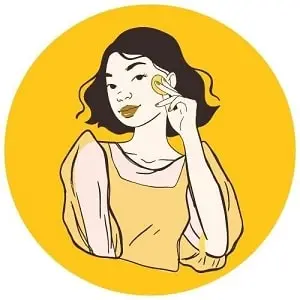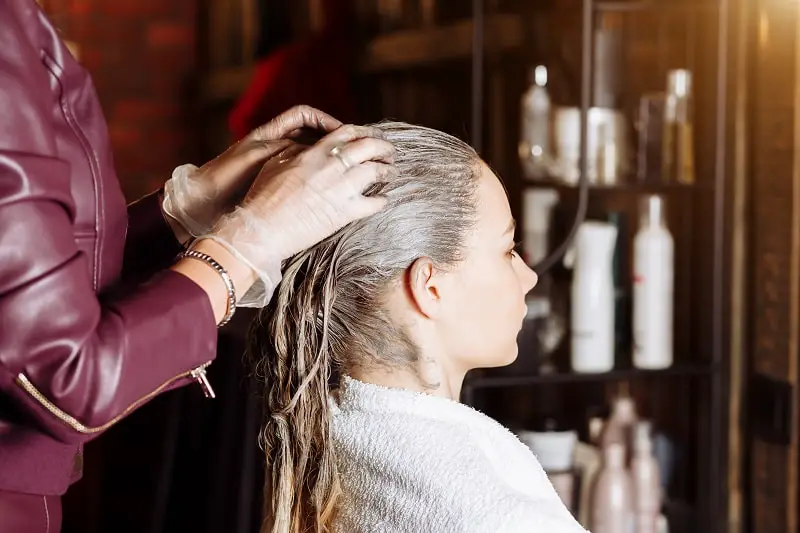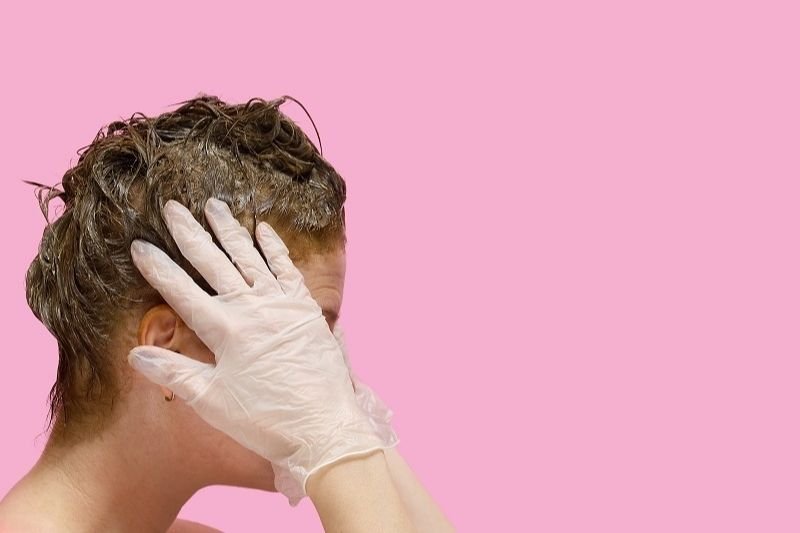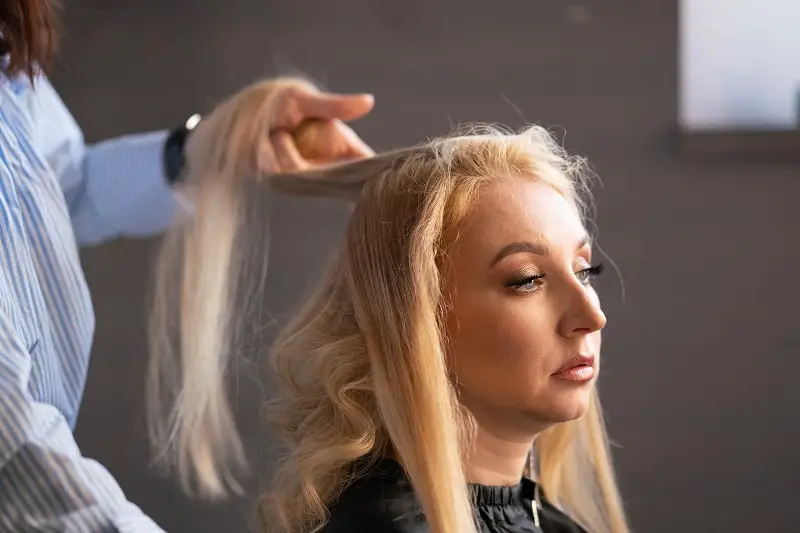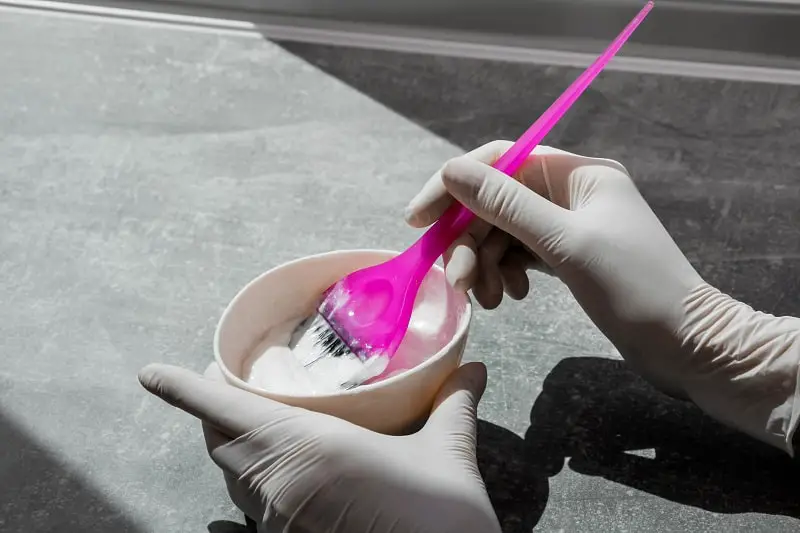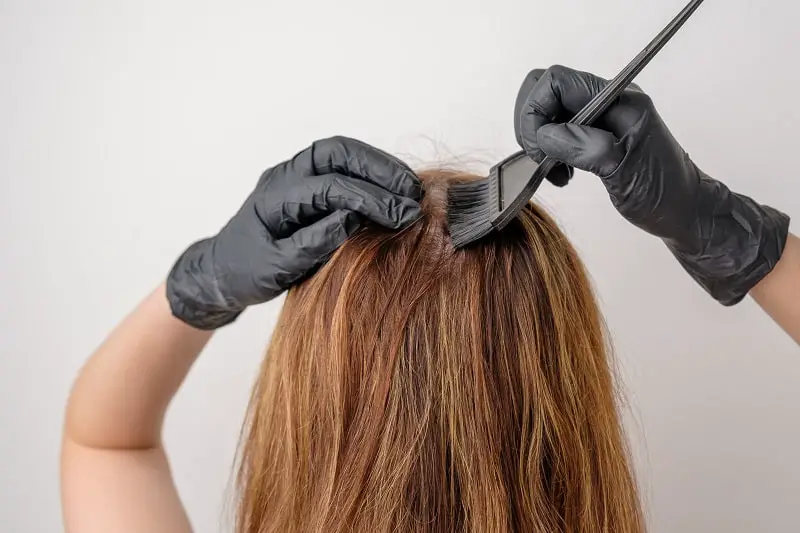Can you straighten a perm? Yes, a perm can be straightened after some time. You should just be ready for some damage control. The word perm itself may cause some folk to be immediately transported to the pomp of the 80’s when hair that was bigger was absolutely better, and when to-die-for hairspray did some crazy damage to the o-zone.
Glitter, glam, and burnt hair aside, perms are so much more nowadays besides the iconic, bodaciously voluminous styles that celebrities like Whitney Houston and Dolly Parton donned. Oh, and how can we forget about the entirety of Queen?
Versatility is crucial in this day and age, when beauty trends are changing with the wind. Whereas one day you could have a perm and love the outcome, you may suddenly realize that it isn’t for you.
Whether you miss your straight hair or are realizing that styling permed hair is far more work than you want to put into it, you may need a way to get out of your new curls—and quickly. While straightening is the obvious answer here, you may be wondering where to even begin.
Honestly, it is confusing and is new territory for you. There is no shame in it. If you can totally relate to the above, fear not: you’ve come to the right article. Today, we’ll be going over all you need to know about straightening permed hair, and the options available to safely perm your hair.
Can You Straighten Permed Hair?
Yes, you can definitely straighten permed hair—but hold the phone! Don’t just put a hot iron to your preciously permed hair all willy-nilly. Although you can straighten permed hair, keep in mind that there will be some degree of damage involved. And, nope, there is no way to avoid that. First off, perming is damaging itself.
Admittedly, it is not as bad as bleaching is, but the cumulative process certainly can create brittle and dry strands. If you happen to use a flat iron to straighten your perm, always use a tried-and-true heat protectant to reduce the amount of heat damage to your hair. Furthermore, there is a “cool down” period after a perm where you shouldn’t get it wet or use hot tools on it.
This remains true regardless of the type of perm you receive. For optimal results after a perming procedure, always follow the after care advice established by your cosmetologist to avoid any unnecessary damage. After all, by keeping your perm in tip-top shape, you are doing your hair a huge service.
How Long After A Perm Can You Straighten Your Hair?
A month to two months should pass before you attempt to straighten your hair following a perm. Permed hair—and other chemically processed hair—can cause high porosity and intense dryness for some individuals.
In themselves, perms can be damaging if your hair is naturally dry or if it has been chemically processed in the past. And, of course, damage can happen if your hair is somehow improperly permed. It is always better to be safe than to be sorry, especially when it comes down to your hair.
Even if it just so happens that you really don’t like your permed hair—whether it is too much upkeep or if it simply isn’t your style—hold off on trying to straighten it for at least a month at a minimum. This time frame is in place to help give your hair some time to structurally recover.
How Do I Straighten Permed Hair?
There are a handful of ways you could go about straightening permed hair. Most of the below options will result in some damage, although they will not completely destroy your hair.
These methods include the following:
- Blow Drying
- Straightening Flat Iron
- Reverse Perm
Consider that a perm will last as long as the solution is active, which will be between 3-6 months after the day of application. Once your hair is wet after straightening, it will absolutely curl up (or wave, depending on the style of perm you received), regardless of how long you had kept your hair straight after straightening.
Lastly, there is a risk of ruining your perm if you straighten your hair more than three times a week. Even if you’re only straightening your hair once a week, it’s possible to ruin your perm if you’re not careful. If you’re not sure how often you should be straightening your hair, ask a professional hairstylist for advice.
Is It Safe To Use A Perm Solution To Straighten Hair?
Perm solution can be used to straighten hair. It would be classified as a chemical straightener and outside of some damage (dryness), it is completely safe. The primary active ingredient in many perm solutions of today is ammonium thioglycolate.
The ammonia in this chemical concoction (also referred to as perm salt) would cause the hair cuticle to swell: this swelling makes the hair vulnerable. By swelling and opening the hair cuticle, depositing various things becomes easy (which is why ammonia is so commonly used in hair dyes).
Meanwhile, the thioglycolic acid within the solution disrupts the hair’s disulfide bonds. These bonds enforce the texture of the hair as determined by the follicle; in short, they provide structure to the individual strands.
When these bonds are disrupted, think of it as wiping the slate clean: anything is possible now. While using a perm solution to straighten hair can be done, this approach has fallen out of popularity thanks to the development and accessibility of hair straighteners.
What Is The Safest Method For Straightening A Perm?
There will always be some damage that occurs when straightening a perm. That being said, there is a safe way to go about it. To avoid further chemical damage, the safest method for straightening would be a straightening iron.
Unfortunately, you still have to wait two weeks to a month after a perm before applying any sort of hot tools to your hair. If you want to avoid some serious, irreversible damage, don’t even think of meddling with your newfound curls.
After the wait, a straightener can be used alongside a heat protectant to straighten out your hair for a time. The heat protectant will evenly distribute the heat throughout your hair and help your hair retain some amount of moisture.
A good way to go about straightening a perm is by gently blow-drying it after a shower, and going through with an iron once it is dry. Limiting the amount of chemical processes your hair goes through in close succession is preferable.
While there certainly are other methods of straightening a perm, using a quality hair straightener with a heat protectant is optimal for circumventing further damage.
Keep in mind that a straightener is not a permanent fix for your perm. Your hair will not remain straight once it gets wet again, or once you wash it. The curls or waves achieved from your perm will bounce right back. This will stay the case for 3-6 months until the perm eventually wears off.
How Do I Prepare Permed Hair For Straightening?
Hold on—drop that iron! A deep-conditioner and heat protectant are crucial to preparing your permed hair for straightening. First things first, since a perm can be drying for most hair types, the retention of moisture is crucial.
Conditioning treatments and oil massages are completely safe on permed hair and are recommended in the instance of your hair becoming particularly dry following a perm.
There is no harm in giving your hair a bit of extra moisture, thus be sure to incorporate moisturizing routines into your beauty regime. Generally, if your hair is particularly thirsty, you should try to deep-condition at least once a week.
This would be best for high-porosity hair, or hair that has issues retaining moisture. Otherwise, feel free to limit deep-conditioning to 2-4 times a month. Professional conditioning treatments are also available, so if a spa day is calling to you, check out what specific treatments your favorite salon offers.
Next, whether a spray, cream or a shampoo/conditioner combo, using a heat protectant is the best way to prepare your permed hair immediately before straightening. The product could cut damage up to 50%—which, honestly, can make or break some hair.
Creams and thermal protection shampoos/conditioners offer the most even coating of the three, while sprays can be a bit more finicky when it comes down to coverage. With their powers combined, deep-conditioners and heat protectants offer fantastic preparation when you are planning on using hot tools to straighten your hair.
How Do I Keep Permed Hair Healthy After Straightening?
Deep-conditioners are the best way to keep permed hair healthy after straightening. Hair that is chemically processed—bleached, dyed, or otherwise—is more prone to being dry. Signs of damaged hair after perming include weak, brittle strands and split ends.
Side note: keratin treatments do not aid in hair growth, contrary to popular belief, though they are superb at temporarily bonding split ends. Continuing on, deep-conditioning treatments are available both in-salon and at-home. They are meant to improve elasticity and reduce the risk of breakage.
Also: there are two primary types of deep-conditioners available on the market. There is a protein deep-conditioner and a moisturizing deep-conditioner. Protein deep-conditioners are used to treat brittle hair with hydrolyzed proteins.
By infusing hydrolyzed proteins into brittle hair, this particular type of deep-conditioning mask makes an effort to level hair back to medium porosity. Additionally, it may soften the hair, canceling frizziness for a time.
Other uses of a protein deep-conditioning mask could increase the overall volume of the hair. On the other hand, a moisturizing deep-conditioner will attract moisture to your hair and soften brittle strands.
You may also notice your hair having a higher shine to it once it is dried and styled. With this in mind, both options are appropriate for use on a perm after straightening. Avoid excessive use of deep-conditioning treatments, as they can weigh down a perm and loosen the curl.
Similarly, excessive conditioning can lead to hygral fatigue, which pretty much means that your hair has been totally overloaded with moisture—yes, that’s a thing!
Too much of a good thing can absolutely make it bad. More than anything, listen to your hair and watch for signs that could indicate a problem.
Final Thoughts: Can You Straighten A Perm?
In all, keep in mind that damage is unavoidable when you are trying to straighten permed hair. This remains the case no matter the type of perm you received in the beginning: chemicals are drying, and where there is dryness, there is damage.
This especially rings true if chemicals are continuously added or if high levels of heat are applied. The above being said, using a flat iron with a heat protectant of your choice is by far the safest option to straighten your permed hair.
This straightening method gives you the control while granting you the ability to reduce some of the unavoidable damage. And, please, wait a month minimum before using any kind of hot tools on your permed hair.
Once your hair is straightened, it will eventually go back to being curly once you get it wet again until the perm itself wears off. At that point in time, you may notice that your hair is feeling on the drier side of things.
It isn’t anything a deep-conditioner can’t fix, so don’t stress out too much about it. The biggest takeaways from this article should be that you should listen to your hair.
There are signs that, while they may seem insignificant, can indicate larger stresses (as seen with hygral fatigue). Don’t ignore any changes to your hair or scalp, and definitely don’t try to repair damages with more damage.
Sometimes, the best thing to do is a little TLC, and if that TLC is regular moisturizing and to hold off on getting a stellar straight perm until your curled perm runs its course, then so be it.
If you enjoyed reading this article, check out some of our other amazing blog posts:
